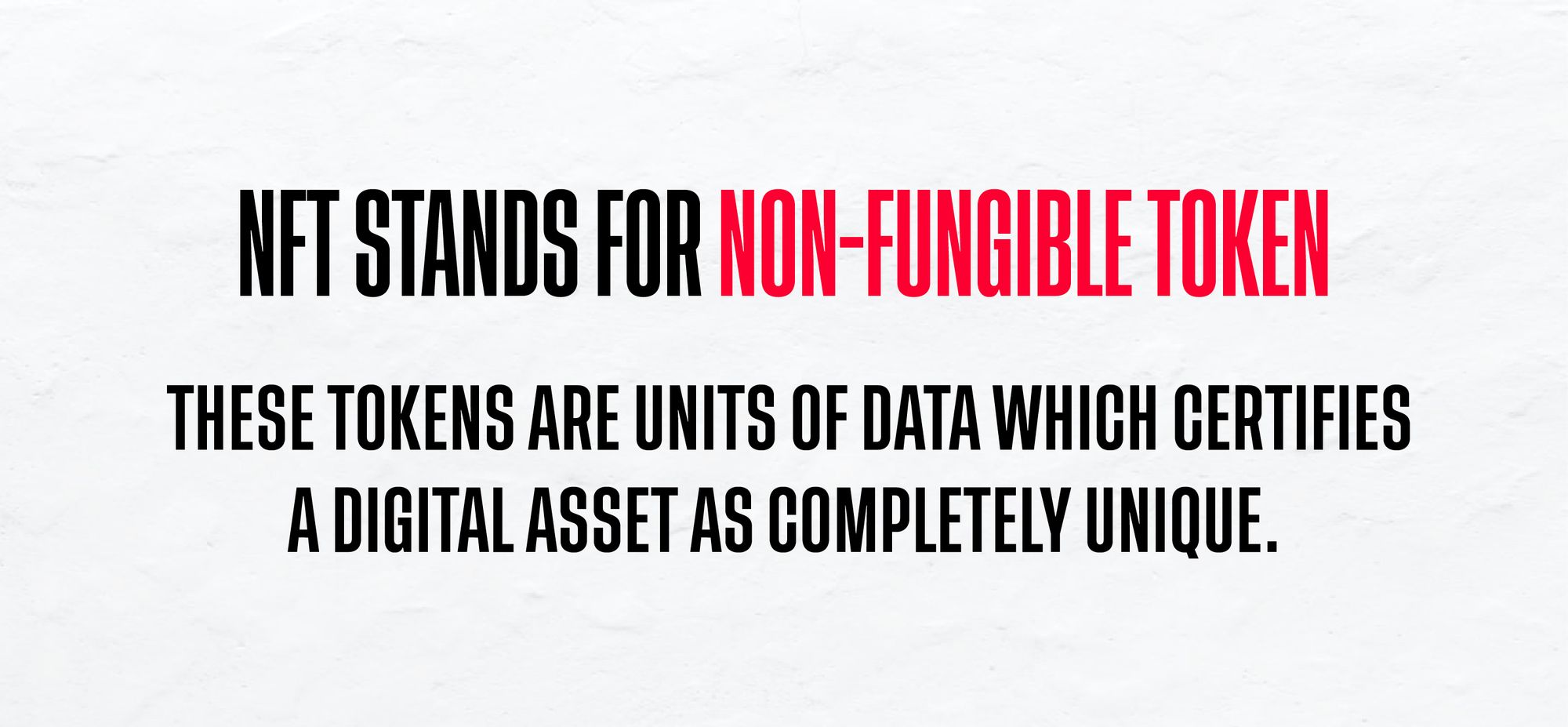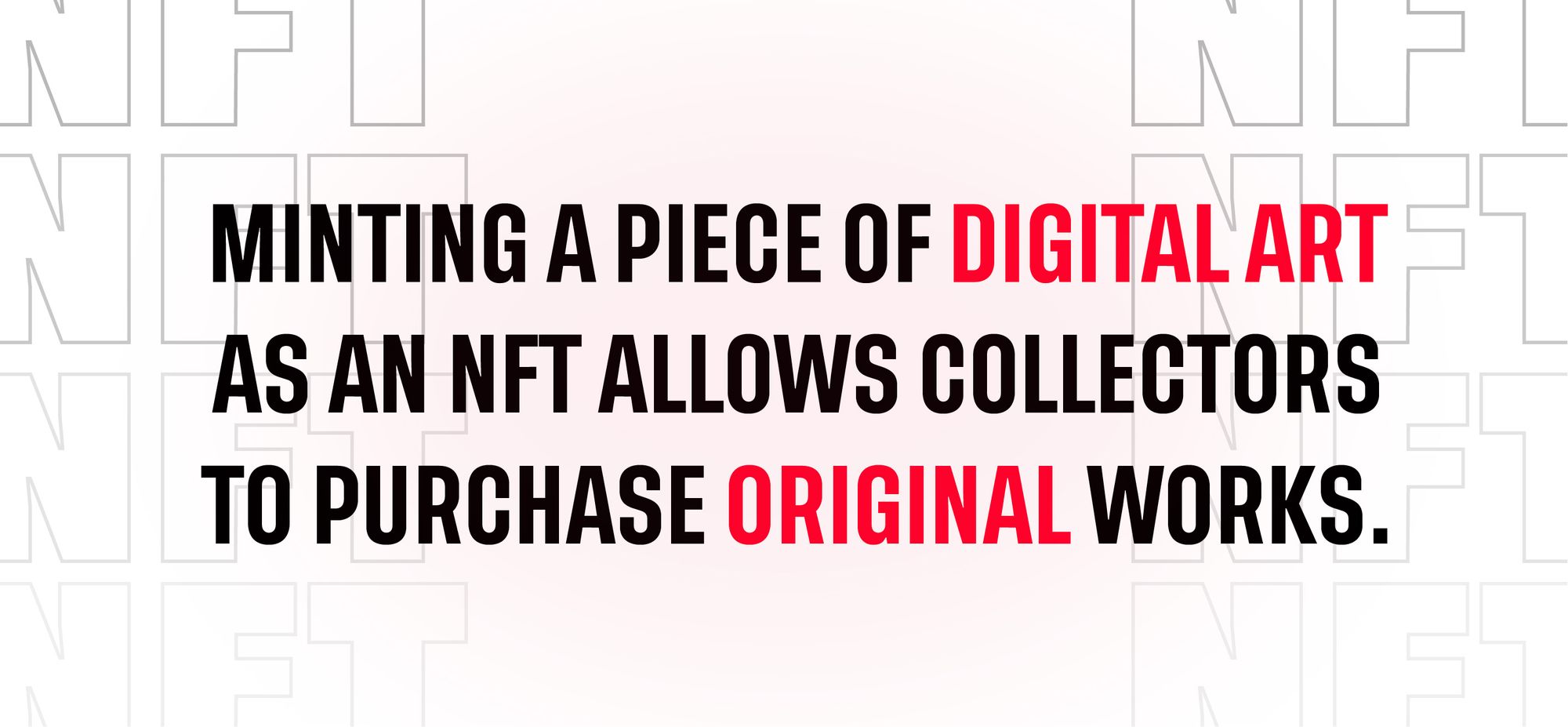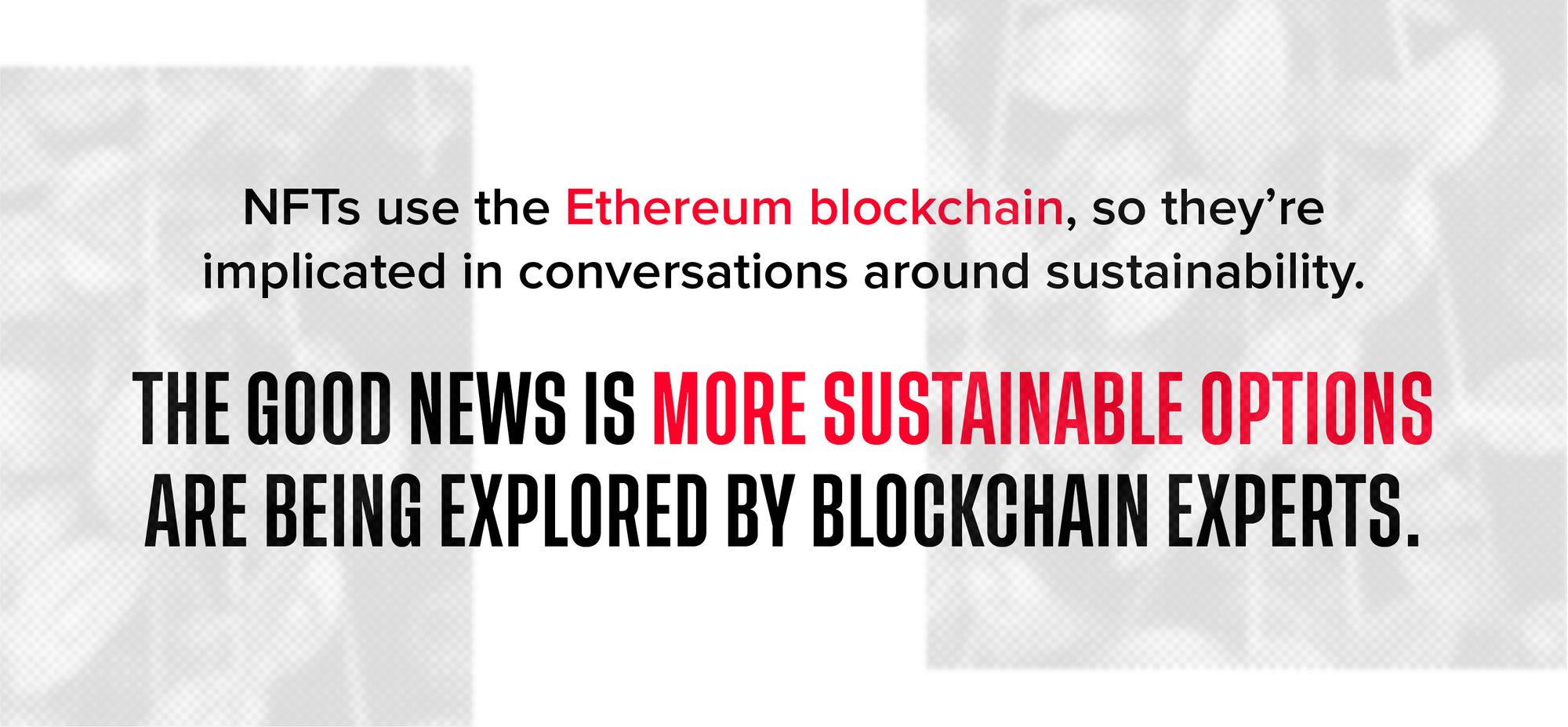What are NFTs?
And are they old news already?
Before you ask, you’re right—NFTs were a craze like… last month. And in this day and age, that’s basically ten years ago. So why are we talking about them?
Because today, we already have a better idea of how NFTs might function in our world moving forward, and what they might be used for. So the initial craze may have died off, but that doesn’t mean NFTs will never be heard from again.
What are NFTs?

Here’s the stuff you probably have heard before, but we’ll say it again anyways.
NFT stands for non-fungible token (pronounced like “funj-ible”). These tokens are little units of data that are stored in the Ethereum blockchain ledger (the same ledger that Ethereum, the cryptocurrency, runs on) which certifies a digital asset as completely unique.
This means the digital asset in question is not interchangeable. You can use NFTs to trace the provenance of an asset, and to dictate terms of sale using baked-in smart contracts.
Think about Pokémon cards. Say you’ve got a mint condition holographic Charizard. That sucker will fetch a ton of cash at auction. You can hold it in your hands, and know it to be authentic.
Now consider a picture of the same card online; that .jpeg isn’t worth anything on its own. It’s just there, on the internet, being saved, copied, and shared by thousands (or millions) of people. You might download that picture and feel you own it—but everyone else could do the same thing, too. This makes it not very valuable.
NFTs circumvent this by ascribing authenticity and ownership to a digital asset. It’s like the digital version of the real card. You—and only you—can buy and sell it; it will retain value, and may even become more valuable with time.
What’s The Point of NFTs?

Good. Question.
It depends who you ask.
NFTs rocketed to prominence in spring this year as vehicles for the buying and selling of digital art. Minting a piece of digital art as an NFT allowed collectors to purchase original works, like buying up the actual Mona Lisa IRL. This indisputable attribution of ownership, coded into the blockchain, makes it clear who owns the real thing.
Okay, so, NFTs are used to buy art—for millions of dollars, sometimes. Or they’re used to buy digital baseball cards. Or to buy digital assets that pair with a new pair of Nikes, for example.
Any digital asset can be minted as an NFT. Music, photos, videos, VR, tweets—anything.
But does any of that really serve a purpose? Like, a real life purpose? Or is this whole thing just about rich people buying things? Is this just conspicuous consumption for the digital age?
Other NFT Use Cases

NFTs represent a really exciting and powerful technology, and we’re only just beginning to experiment with their myriad of potential applications. Buying and selling stuff for fun (and monies!) may indeed only be one small slice of what NFTs have to offer the mainstream digital world.
For example, as NFTs cannot be forged or exchanged, they could be used to facilitate certifications or licensing, or perhaps even modes of identification, like passports or biometrics.
NFTs can also be used to reduce certain types of crime, like counterfeiting. It could be used to mint tickets to events, for example, that could be bought or sold without the risk of accidentally purchasing fakes.
All of this hubbub has really just scratched the surface, and as NFTs spend more time in the mainstream, we’ll get a better idea of what they can really enable us to do.
The Environmental Impact of NFTs

Because NFTs use the Ethereum blockchain, they’re also implicated in conversations around the sustainability of Ethereum as a cryptocurrency.
A cryptocurrency like Ethereum requires the use of energy to run the computers that perform the proof-of-work, or the calculations that verify the blockchain, and in recent years, this energy consumption has grown.
For folks buying and selling NFTs, this is a serious moral consideration. (Check out this great article on NFTs and the environment for more info.)
There are three options for reconciling this problem. The first requires the creation of tech that decreases the amount of energy used in the process of mining, or that eliminates the need for mining within the Ethereum blockchain.
The second could occur if NFTs branched off into their own space. Transactions could occur a step back from the blockchain, not requiring proof-of-work calculations for every step; only when a transaction was entirely complete would it be logged into the blockchain. This would reduce the amount of energy required for the verification process.
Third: wind turbines! Solar panels. Hydro. Clean energy, baby: then we could (digitally) mine alllll we want without harming the environment.
The good news? All three of these options are being explored by blockchain experts today. It’s only a matter of time before one or more of these solutions becomes more viable.
Then there’s really no telling what NFTs could mean for mainstream society.
Anyone wanna buy some of our tweets???? Eh????